This is the big dead manta ray prop that I made for the Street Theatre’s production of Jacques Brel is alive and well and living in Paris. Sadly Desirée – my name for her – was cut from the final production, but I loved making her. Manta rays are such awesome creatures!
Because she had a wingspan of over 2 metres, I decided chalk on the floor was a good way to start drawing up a pattern. I also bought myself a little plastic model of a manta to refer to, which turned out to be useful.
From this I traced a pattern onto butcher’s paper and from there onto sheets of polystyrene which were then built up and glued into a block.
I also decided to insert a strip of thin plywood into the underside right across the width of the wingspan, so that the wings would be protected from breaking, especially at the tips. I also did that with the fins that I added.
Then much shaping with a really sharp knife, a narrow power belt sander, and sandpaper. I decided to keep the surface a bit rough, which often makes it easier for an audience to read.
When I use polystyrene that will just have a painted finish I skin it with muslin first. Here you can just see some of the muslin draped over the spray adhesive can on the right.
I usually add a little bit of latex to the first coat of paint to help make everything stick to the styrene.
Then it’s on to colouring; for the final shading I used spray paint so that the colours merged softly. It was tricky to seat in the eyes (painted and glossed wooden door knobs) and get the shape of the upper eyelid right.
There are a few more in-between photos in my photoset at Flickr.
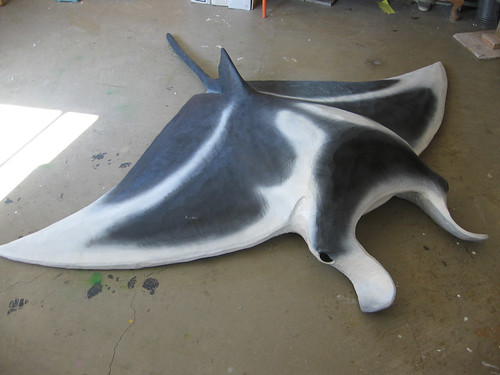
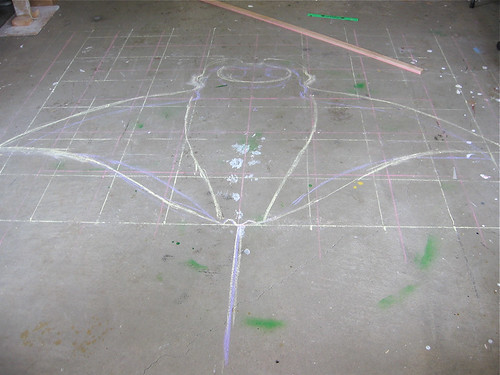

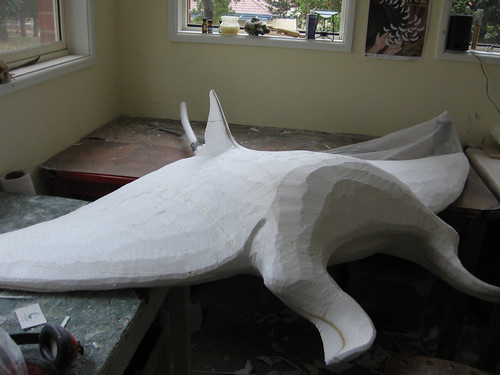
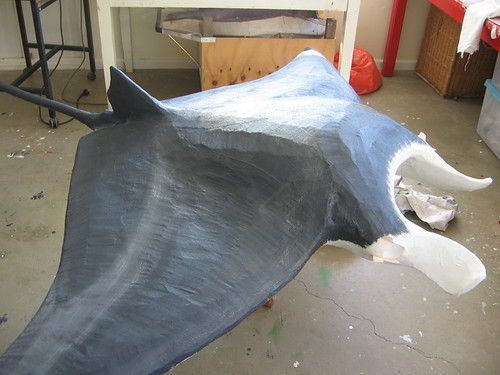
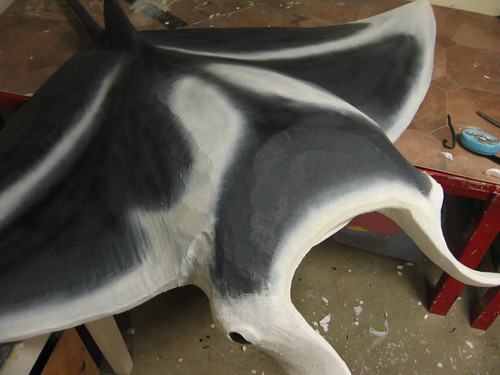

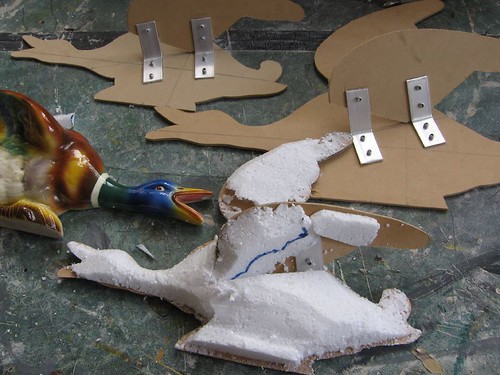
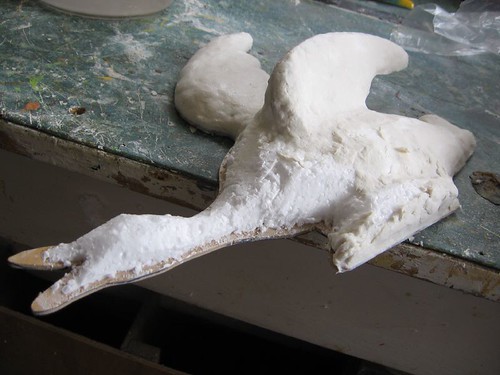
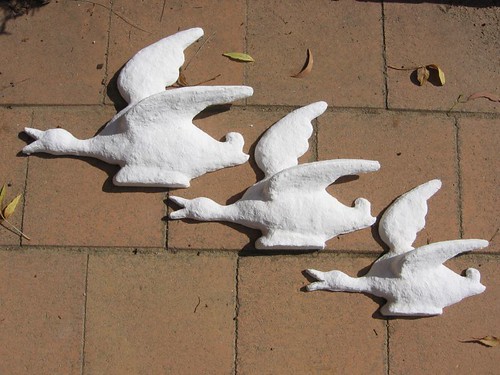

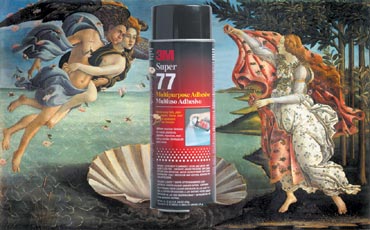 because there is a humourous appreciation there of the beauty and godsend of finding the right glue for the job, but also because it reminds me of my
because there is a humourous appreciation there of the beauty and godsend of finding the right glue for the job, but also because it reminds me of my 

